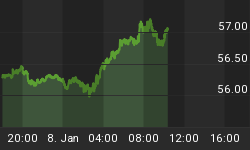Strong gains in crude oil and U.S. equities helped weaken the USD CAD on Thursday. Despite a new high for the year in the equity markets, the rally in the Canadian Dollar was not impressive. The Canadian Dollar looks tired and may begin to weaken if the oil and equity markets cannot sustain their upside movement. Technically, the USD CAD is in a position to reverse the weekly chart to the upside, all it is going to take is a close above 1.0865 to trigger the start of a short-covering rally next week.
News that business confidence was up helped boost the EUR USD on Thursday along with an increase in trader appetite for risk. The rally to the upside today looked like a technical bounce from retracement support and failed to make any significant head roads into the established down trend. At best this currency may rally back to 1.4155 to 1.4190 before it reaches another resistance zone. Currently this market is also in a position to post a weekly reversal top. If the crude oil and equity markets are not able to sustain their gains, this pair may be the first one to crack to the downside.
The GBP USD posted a strong gain on the daily chart but was unable to change the trend to up. Technically this market remains in a down trend with 1.6585 the critical main top. Today's rally was initiated by increased appetite for risk and fueled by news that U.K. housing prices rose in July at their best pace since early 2007. In order for traders to buy into a U.K. recovery, the housing sector is going to have to show improvements in all areas.
The USD JPY rallied sharply higher as U.S. equity markets continued the July rally by posting a new high for the month today. Today the U.S. reported that the number of people collecting jobless benefits fell for the third time. This sent a sign to equity traders that the recession may be easing and increasing demand for higher yielding assets. The charts suggest the next upside target is 96.15. This currency pair should remain strong unless 95.31 fails as support.
New Zealand Dollar investors were surprised today when the Reserve Bank of New Zealand announced that there remains a chance that interest rates would remain low until late 2010. The central bank left interest rates at 2.5 percent at its meeting today but expressed concerns that high interest rates and lofty currency price could curtail future growth and bring on additional risks.
Technically, the current chart pattern suggests that this currency pair is set up for a weekly closing price reversal down. A close under .6554 will be a strong sign that this market is topping out with a downside target of .6413 to .6362.
The Aussie Dollar gained on both the New Zealand and U.S. Dollars. News that New Zealand is still considering an interest rate reduction strengthened the Aussie while weakening the Kiwi. The strong surge in the U.S. equity markets early in the trading session helped increase demand for risk leading to a surge in the AUD USD. Today's gains erased yesterday's lost but failed to come close to challenging the high for the week at .8337.
















